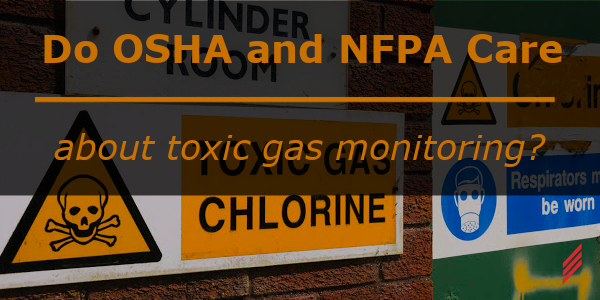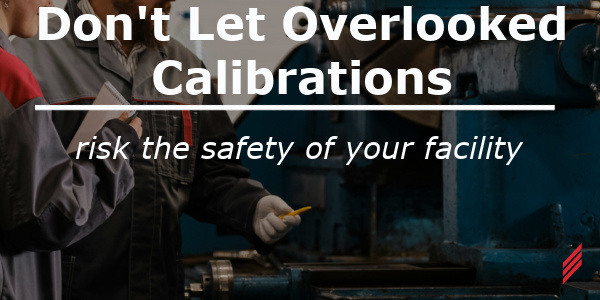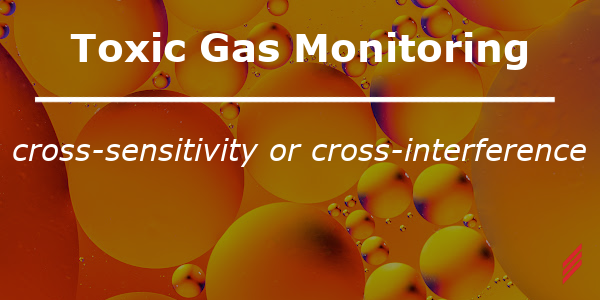Do OSHA and NFPA Care About Toxic Gas Monitoring?
by John Kurowski on Aug 6, 2020 10:30:00 AM

When presented with the question in the title above, I found myself thinking what an interesting combination (OSHA and NFPA) to ask about in the same question. Being immersed in codes relating to Toxic Gas Monitoring Systems (TGMS), I probably would have asked a different question, “Does IFC and NFPA care about Toxic Gas Monitoring?”. Now that I have brought IFC into the mix, we need to discuss all three. Before we go there, I also must think about the person asking the original question. Do they work in a state that adopted NFPA? If so, then maybe the original question makes perfect sense. Did this this subject just get too complicated and convoluted? Let’s break it down.
- OSHA – Occupational Safety and Health Administration
- NFPA – National Fire Protection Association
- IFC – International Fire Code
 OSHA is part of the United States Department of Labor. It was created to ensure safe and healthful working conditions for working men and women by setting and enforcing standards and by providing training, outreach, education, and assistance. OSHA covers most private sector employers and their workers. For the purpose of this blog, OSHA publishes tables of Permissible Exposure Limits (PEL).
OSHA is part of the United States Department of Labor. It was created to ensure safe and healthful working conditions for working men and women by setting and enforcing standards and by providing training, outreach, education, and assistance. OSHA covers most private sector employers and their workers. For the purpose of this blog, OSHA publishes tables of Permissible Exposure Limits (PEL).
NFPA is a global self-funded non-profit organization, devoted to eliminating death, injury, property and economic loss due to fire, electrical and related hazards. NFPA is widely known as a codes and standards organization.
IFC The IFC is designed to address conditions hazardous to life and property from fire, explosion, handling or use of hazardous materials and the use and occupancy of buildings and premises. They meet these needs through code regulations.
Enough with the formal definitions. What does this really mean for me and you? Let’s start with OSHA. All businesses are covered under the OSHA general duty clause. Section 5(a)(1) of the Occupational Safety and Health Act, requires that each employer furnish to each of its employees a workplace that is free from recognized hazards that are causing or likely to cause death or serious physical harm. This is one of the most overarching requirements for any and all workplaces. If you store or use toxic gases, you have by definition of the word toxic (poisonous substance), a recognized hazard. You are required to keep the workplace free from this recognized hazard. Furthermore, OSHA publishes tables of Permissible Exposure Limits (PEL), for which you are legally bound to ensure no one is ever exposed to concentrations above these levels. The logical course of action is to use continuous gas monitoring to prove a work area is free from a recognized (gas) hazard because if you don’t know what is in the air, you can’t say the workplace is free from the hazard. Going all the way back to the title of this blog and using the logic from this paragraph, OSHA absolutely does care about Toxic Gas Monitoring.Now, let’s talk about the NFPA. Firstly, not all states have adopted NFPA as their fire code. And, some states have adopted their own modified version of NFPA. For example, the state of Massachusetts has adopted 527 CMR 1.00 which is based on NFPA 1. That said, if you live in a state that has adopted NFPA or a version of NFPA, then you must understand how this might affect Toxic Gas Monitoring. Does NFPA care about Toxic Gas Monitoring? The answer is: sort of, maybe, sometimes, frequently, not always, yes, no. Before you can really answer the question of how or why NFPA impacts Toxic Gas Monitoring, you must answer additional questions first. What type of gases do you store/use (flammable/toxic/corrosive/etc)? How much quantity of each gas type do you store/use? What type of building do you store/use these gases? How many Control Areas are defined by Fire Barriers in your building? The answers to this first set of questions can guide you to the final answer of the question of whether NFPA cares about Toxic Gas Monitoring.
Let’s take another step on the subject of NFPA and TGMS. Once you have answered the questions from the previous paragraph, the NFPA codes address the storage, use, and handling of gases. Without re-writing all the NFPA codes in this document, you can almost always count on a requirement to use gas monitoring for silane, ethylene oxide, hydrogen, acetylene, liquid produced flammable vapors, vapor produced from liquid carbon dioxide, refrigerants, corrosive gases, and toxic and highly toxic gases. In addition, a requirement for gas monitoring might not only be the gas monitoring itself, but other requirements such as horns and strobes, emergency power, and emergency shut off valves. As always, be aware that there are caveats for every code definition. Whether you fall under some of the general NFPA guidelines like NFPA 1 and 55 or you fall under guidelines specific to your line of business like NFPA 2, 30A, 33, 45, and 318, NFPA absolutely does care about Toxic (and Flammable) Gas Monitoring.
Now, let’s talk about the IFC. Obviously, if your jurisdiction did not adopt the NFPA codes, then they probably adopted a version of the IFC as their fire code. While NFPA uses different numbered documents to address different hazards or businesses, the IFC uses different chapters within one document to address different hazards or businesses. An example of this is semiconductor manufacturing and research, NFPA 318 is the required document, while IFC Chapter 27 is the required chapter. Just as the NFPA requires you to understand what type of gas, how much gas, and control areas; so does the IFC require the same. In general, the IFC will have similar requirements as the NFPA…with some interesting deviations. That being said, just as was mentioned in the previous paragraph on NFPA, the IFC has very clear requirements on when gas detection is required. The IFC cares about gas detection.
Regardless of which set of code documents your jurisdiction has adopted, remember to always read the document in the forward direction. Sounds crazy, but if you just search for key words, you often find text that suits your purpose only to find out there is qualifying language prior in the document. Also, both NFPA and IFC require you to abide by rules found in other industry guidelines such as the Compressed Gas Association (CGA). Most notably, both NFPA and IFC require meeting the requirements in CGA G-13, Storage and Handling of Silane and Silane Mixtures. In closing, it’s probably not a good idea to only implement the codes as defined by NFPA or IFC because you will always have the OSHA General Duty Clause as the legal test of whether you have implemented a safe workplace.
About the Author
John has a B.S. in Chemical Engineering from Penn State and a M.S. in Manufacturing Engineering from RPI. Prior to coming to Hallam-ICS, John had 30 years of experience working in Manufacturing/Process/Facilities Engineering for printed circuit board and semiconductor manufacturing. As a Senior Engineer at Hallam-ICS, John is responsible for the design and specification of Toxic Gas Monitoring Systems. He participates in all project design phases from concept through construction documents.
Read My Hallam Story
About Hallam-ICS
Hallam-ICS is an engineering and automation company that designs MEP systems for facilities and plants, engineers control and automation solutions, and ensures safety and regulatory compliance through arc flash studies, commissioning, and validation. Our offices are located in Massachusetts, Connecticut, New York, Vermont and North Carolina and our projects take us world-wide.
You May Also Like
These Related Stories

Don’t Let Overlooked Calibrations Risk the Safety of Your Facility
Why Toxic Gas Monitoring Is Critical for Labs and Manufacturing Facilities



No Comments Yet
Let us know what you think